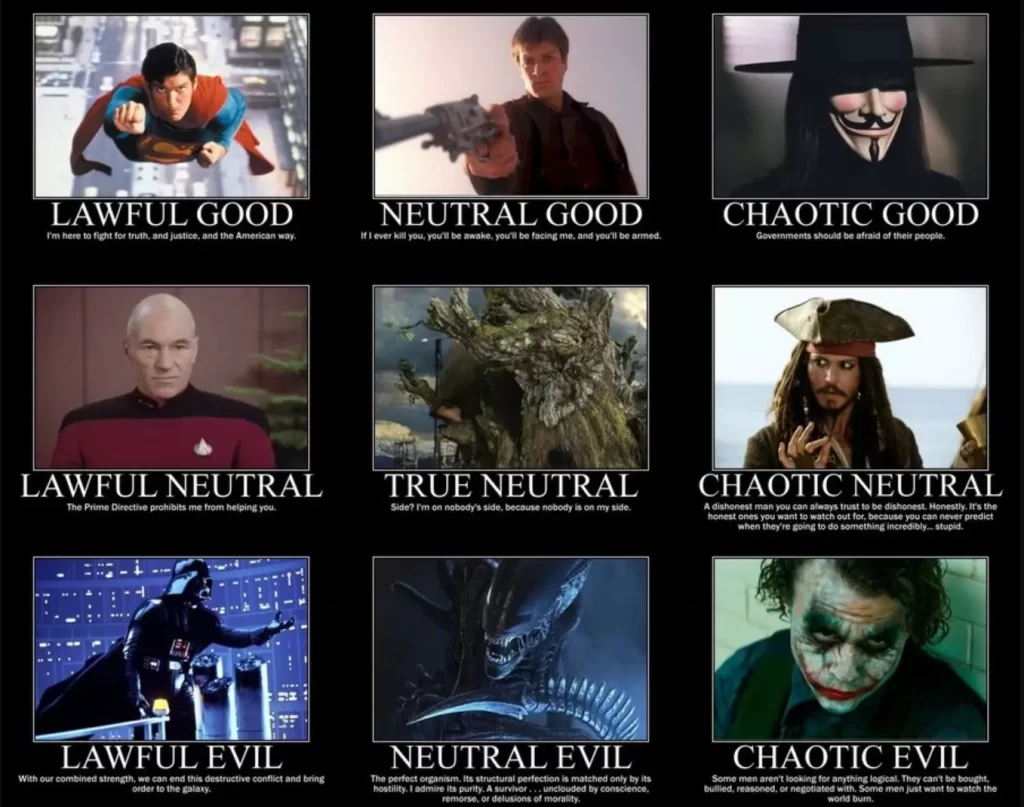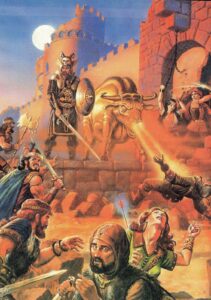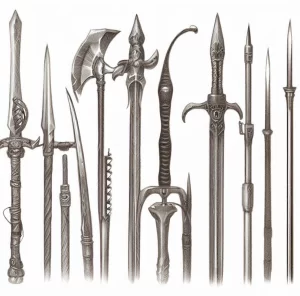
In the complex world of role-playing games, the concept of character alignments might at first appear intimidating and abstract. However, in reality, it is a simple yet profound system that provides a framework for understanding a character's beliefs, values, and ethical compass. Here's a detailed exploration of alignments to unravel their intricate nuances.
In the expansive and vivid realm of Dungeons & Dragons, the alignment system emerges as a central mechanism for crafting detailed and layered characters. While there exists a wealth of comprehensive analyses and philosophical discourse delving into the intricacies of these alignments, the essential understanding remains rooted in the relationship between a character's view on societal laws and their ethical stance towards others.
This dual-axis system acts as a rich foundation that imbues characters with depth and complexity, helping to guide their actions, reactions, and relationships within the game world. It becomes a compass that navigates the complex terrains of morality and ethics, fostering engaging narratives where characters grapple with dilemmas that test their values and beliefs, thereby shaping riveting stories and immersive role-playing experiences.
Alignments are typically visualized in a grid, consisting of two axes that intersect and define a character's moral and ethical standing. This 3x3 grid serves as a map for a character's moral compass, guiding their actions and decisions.
Initial Beginning
In the initial stages, the alignment system was relatively simple, mainly focusing on the spectrum of good vs. evil. This was inspired by various fantasy literatures, notably the works of J.R.R. Tolkien and Michael Moorcock. Moorcock's "Eternal Champion" series, for instance, had a profound influence on the alignment system. In these series, the concepts of Law and Chaos are central themes, presenting a moral and philosophical conflict that Gygax sought to incorporate into his game to give it a richer narrative depth.
As the game evolved, so did the alignment system. It was expanded to include the law-chaos axis, creating a more nuanced way to define a character's ethical and moral stance. This dual-axis system allowed for a more detailed and layered portrayal of characters, making the gameplay more immersive and complex.
This innovation allowed players to navigate their characters through the game world with a more defined set of guiding principles, thus influencing their decisions and interactions throughout the gameplay. It not only became a tool for character creation but also a fundamental element in shaping the narratives and story arcs in the game, fostering a deeper connection between players and their characters.
The system encouraged players to think more deeply about their characters' motivations and actions, creating a space where moral dilemmas and complex decisions became central elements of the gaming experience. Through this, the alignment system became a vital tool in the creation of rich, complex narratives that have come to define the world of Dungeons & Dragons.
The Horizontal Axis: Lawful, Neutral, Chaotic
The top row of this grid consists of three distinct alignments: Lawful, Neutral, and Chaotic, each representing how a character perceives and relates to the laws and rules that govern a society.
- Lawful: Characters aligned with Lawful principles believe in the importance of order, structure, and tradition. They follow the laws and codes of conduct that govern their society or their personal beliefs. This could be as profound as a paladin's sworn oath to a deity or as simple as a citizen's adherence to the law.
- Neutral: Those who fall into the Neutral category in this axis may see the importance of laws but are also flexible and pragmatic. They might follow rules when it suits them but are not strictly bound to them. Their relationship with laws and societal rules is often guided by a balance between order and chaos.
- Chaotic: Chaotic characters reject the constraints of laws, tradition, or any form of imposed structure. They believe in individualism, freedom, and spontaneity, often acting according to their whims and desires rather than adhering to external regulations.
The Vertical Axis: Good, Neutral, Evil
The left column of the grid, comprising Good, Neutral, and Evil, represents a character's beliefs about compassion, empathy, or lack thereof towards others in society.
- Good: Characters with a Good alignment value altruism, kindness, and selflessness. They believe in doing what's right and often act in the best interest of others. This reflects their commitment to moral virtues and a sense of duty to society.
- Neutral: Those aligned with Neutral in this vertical spectrum may act out of self-interest or strive for a balance between Good and Evil. They might show compassion but are not governed solely by altruism or malice.
- Evil: Evil-aligned characters are often motivated by selfishness, greed, or malevolence. They may act in ways that are harmful or detrimental to others, guided by their own ambitions and desires.
Combining Alignments
Character alignments are stated by combining a term from the top row with one from the left column.
- Lawful Good: A person who believes in adhering to laws and societal codes (Lawful) and feels a moral obligation to do good for others (Good).
- Chaotic Good: A person who rejects societal laws (Chaotic), yet still feels a responsibility to do good for others (Good).
While there are comprehensive analyses and philosophical examinations of these alignments, the essential understanding lies in the interplay between a character's stance on societal laws and their moral outlook towards others. The alignment system provides a rich tapestry that can add depth and complexity to characters, helping to shape their actions, reactions, and relationships within the game world.
Whether a novice or seasoned player, the alignment system offers an exciting way to explore the ethical dilemmas and moral quandaries that make role-playing games a compelling and immersive experience.







